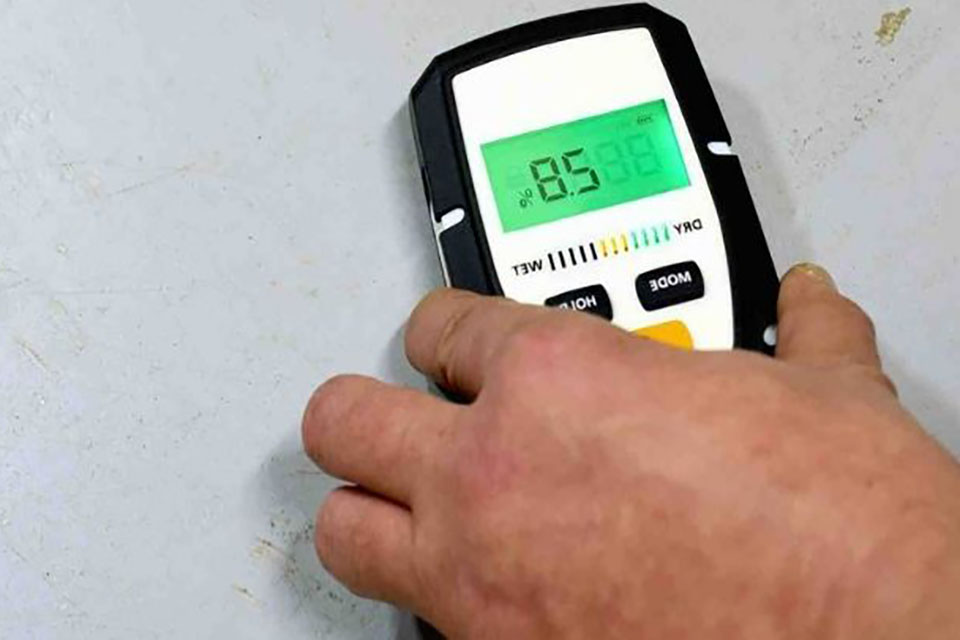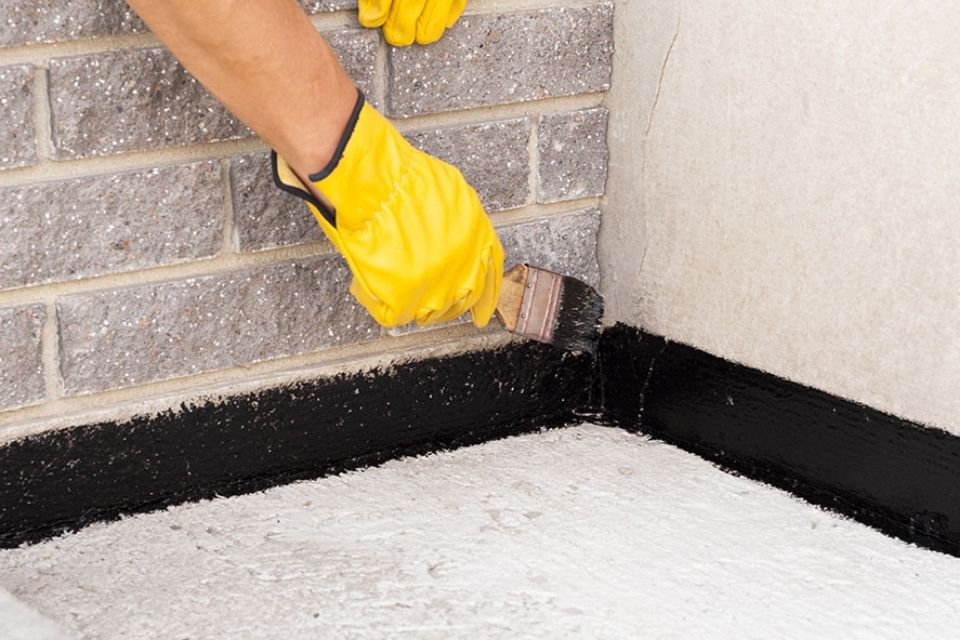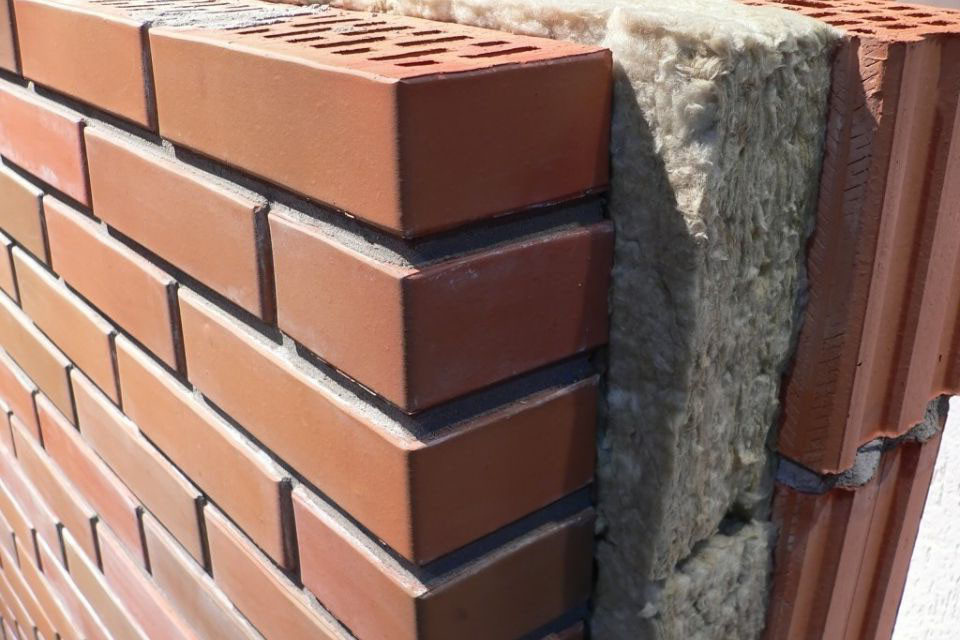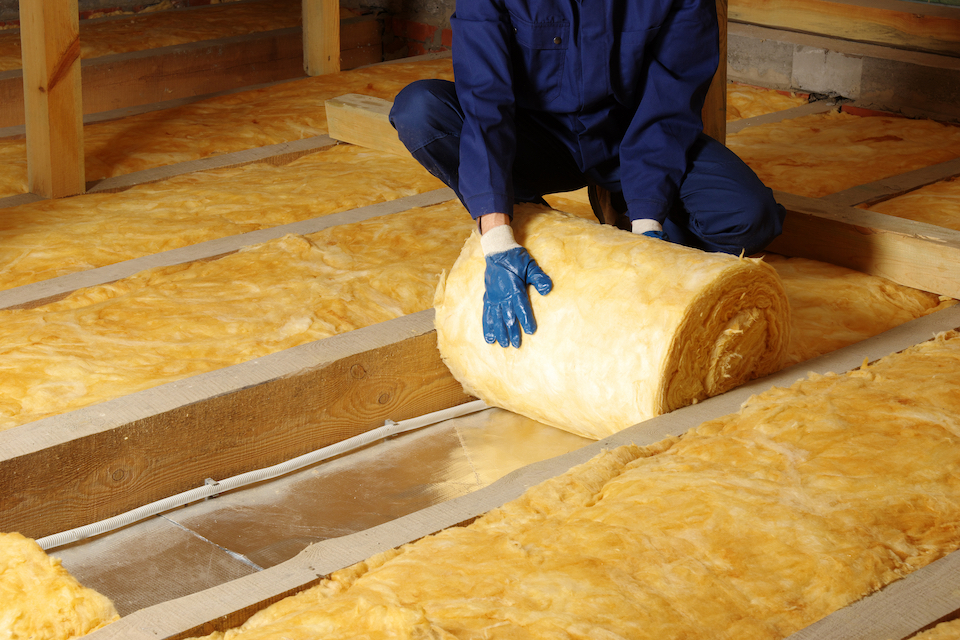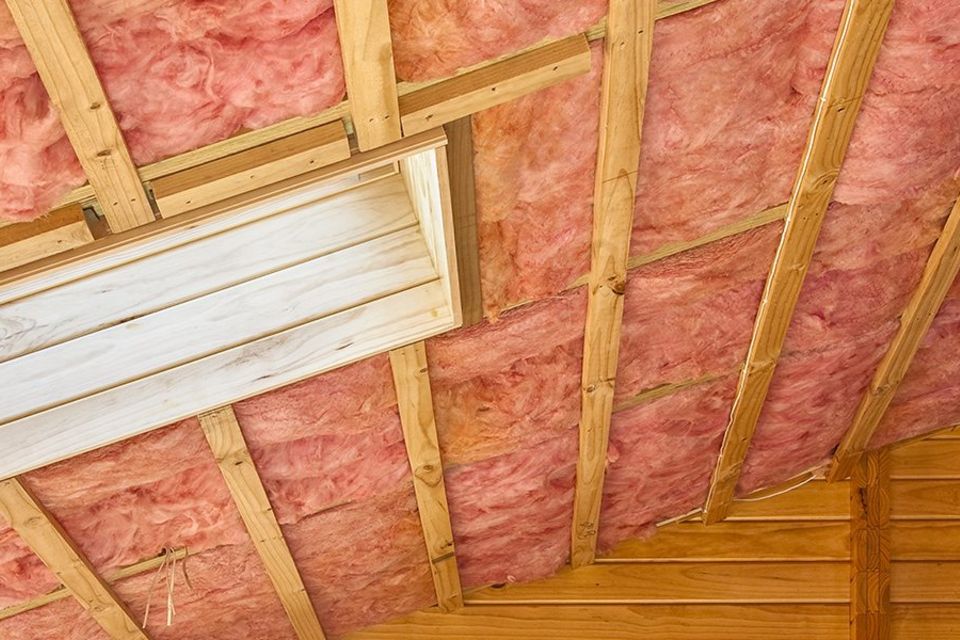How Much Does a Damp Survey Cost?
Are you wondering how much a damp survey costs?
If your home is suffering from a damp problem, you may need to have a damp survey. In this guide, we will go over all of the costs involved with a damp survey, including the job's labour costs and any additional costs that may come up.
A damp survey is the best way to determine if your home is suffering from a dampness problem.
We will also look at the different types of damp and the benefits of having a damp survey conducted.
So what is the cost of a damp survey?
The average cost of a damp survey on a three-bedroom semi-detached property is around £220-£280. If your home is slightly larger, for example, a four-bedroom detached property, this may cost about £350-£450. If your home is slightly smaller, for example, a two-bedroom flat, this could cost around £180-£220 on average.
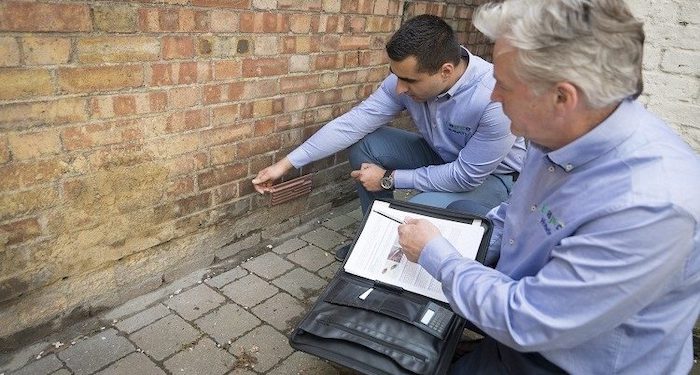
The price for a damp survey on a bungalow could be anything between the lower price and the higher price listed above, depending on the size of the property and the number of rooms.
What will the price depend on?
The damp and timber survey cost will depend on the size of your home and the number of rooms that it has. Homes with more rooms and more floors will have higher costs as the survey will take longer to complete.
Your location can also affect the overall cost. Those based in the London area can expect to pay more than those based in the North or other parts of the UK.
Damp survey costs tend to be higher in the London area due to increased labour prices.
Damp Survey Prices
Below is a table highlighting the costs that you can expect for various damp survey jobs:
| Job Description | Average Cost |
|---|---|
| Damp survey on a two-bedroom flat | £180-£220 |
| Damp survey on a three-bedroom semi-detached house | £350-£450 |
| Damp survey on a four-bedroom detached house | £220-£280 |
| Damp survey on a bungalow | £180-£450 |
What are the Additional Costs of Surveying Damp?
There are several additional costs that you may need to think about with this type of work. Below is a list of the main additional costs that may come up with a damp survey:
Damp Proofing
Once your damp proof survey has been completed, you will know whether you have a damp problem, which will determine how much damp there is and whether you need damp proofing. The average cost for damp proofing is around £300-£2500, depending on the size of your property and the level of damp in your home.
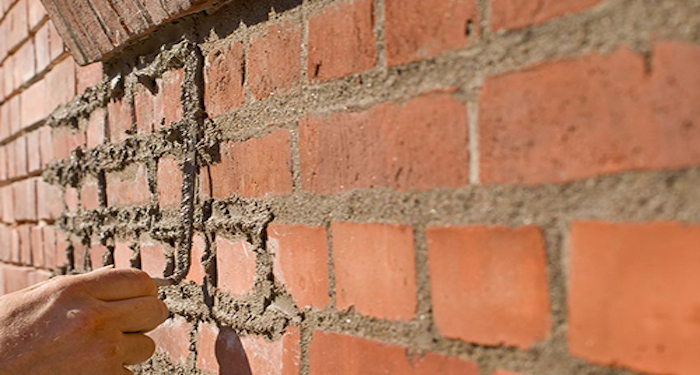
Rising Damp Treatment
If the survey has shown you have a rising damp issue, treatment can cost between £850 and £2,400 for a semi-detached house, depending on the method used.
Rising damp treatment typically involves identifying and repairing the source of moisture and installing a new damp-proof course (DPC). The process may also include applying damp-proofing creams, membranes, or injections to prevent further moisture from rising through the walls.
Drainage Channel Installation
If your property is experiencing rising damp, installing a drainage channel can be an effective solution. You can opt to install one along a single wall, which typically costs between £300 and £500, or around the entire perimeter of the property for approximately £500 to £1,500.
A drainage channel is designed to direct excess moisture away from the building, helping to prevent water from accumulating and causing further damage.
Replacing Skirting Boards
As part of treating rising damp, it’s often necessary to remove and replace the existing skirting boards, especially if they’ve been damaged by moisture. New skirting boards typically cost between £1 and £3 per metre, depending on the style and material chosen.
If you’re hiring a professional to supply and fit skirting boards in an average-sized room, you can expect to pay between £350 and £750 for the complete job. This includes labour, materials, and any preparation or finishing work required.
Penetrating Damp Treatment
Alternatively, if you have a penetrating damp issue treatment is likely to cost between £150 and £250.
Penetrating damp issues are significantly cheaper to treat compared to rising damp issues in most cases. Treatment generally involves mending a window seal or gutter as well as any damage to internal plaster.
Painting and Decorating
Regardless of the cause of your damp, there is a good chance you may have some damage to your walls which will need to be redecorated. If you would like to hire a professional painter and decorator to complete this work for you, you can expect to pay around £180-£500 per room.
Plastering
Similarly, you may need to hire a plasterer to repair the walls before redecoration can commence.
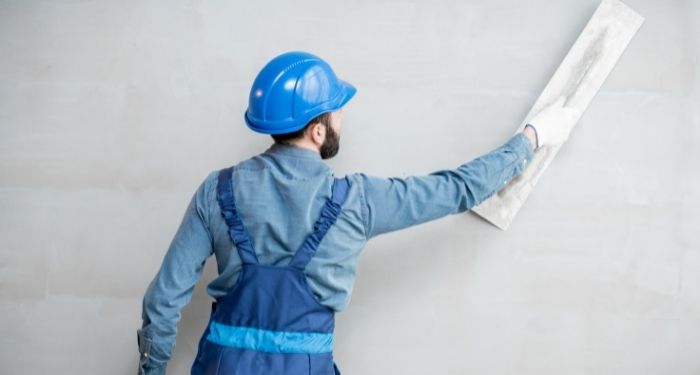
The average cost for plastering is around £150-£250 per wall or £300-£900 per room.
Tradesmen Costs for a Damp Survey
A damp survey will need to be carried out by a professional. With this in mind, it's worth knowing the average costs of hiring a professional to carry out a damp survey for you.
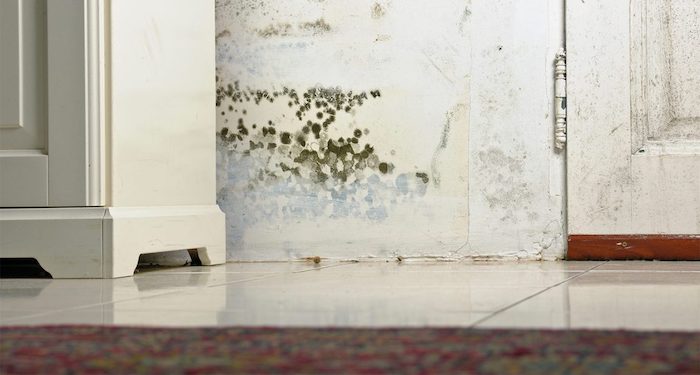
The average cost of hiring a professional to carry out a damp survey for you is around £200-£300.
The price that you pay will depend on the type and size of your home and the location of your property. All of the costs are included in the price to assess your home, however, if you need any work done to fix your damp problems, you will need to pay extra.
How Long Does a Damp Survey Take?
The time it takes to complete a damp survey on your home will depend on several factors, including the size of your home, the ease of access to your property, and the extent of the damage to your home.
A full damp survey will usually take around two hours to complete on average. However, if your home is particularly large or difficult to access, it could take up to four hours. If the damage is quite severe, then the survey could take slightly longer.
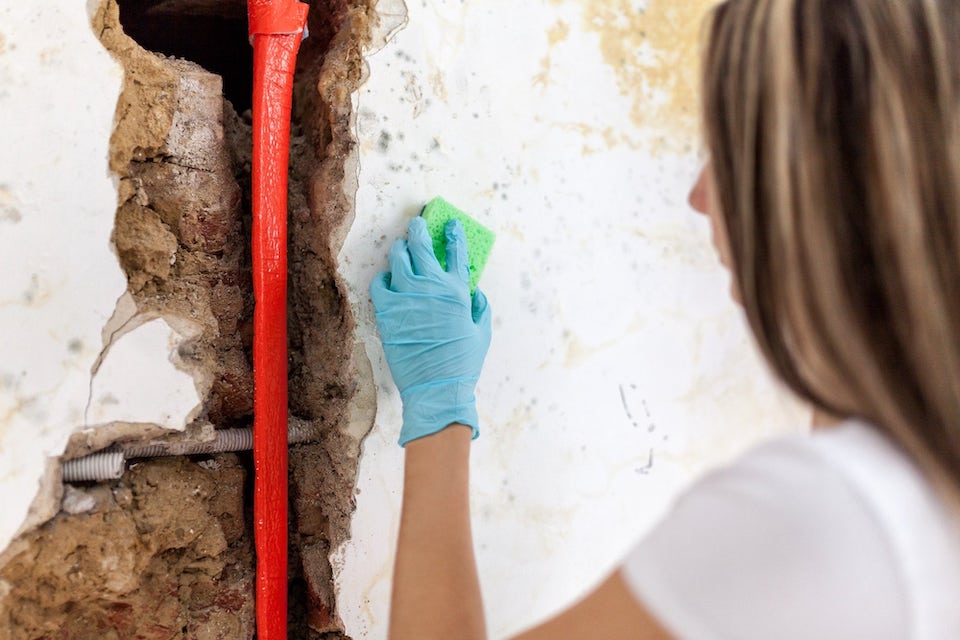
What Does a Damp Survey Entail?
During the survey, the inspector will carry out a visual assessment of both the interior and exterior of the property. They will look for signs such as damp patches, peeling paint, mould, musty odours, and damage to plaster or timber.
In addition, they may use moisture meters and thermal imaging tools to measure moisture levels within the walls and floors.
Key elements of a damp survey may include:
- Inspection of internal walls, ceilings, and floors for damp signs
- Assessment of external features like gutters, drains, and brickwork
- Use of damp meters to detect moisture levels in different areas
- Identification of the damp type and the source of moisture
- Recommendations for treatment, repairs, or further investigation
After the survey, you’ll receive a written report detailing the findings, along with suggested solutions and estimated repair costs if necessary. This can be particularly useful when buying or selling a home, or if you're dealing with persistent damp issues and want a professional diagnosis before starting treatment work.
Types of Damp
There are three main types of damp that can affect the home:
- Condensation
- Rising Damp
- Penetrating Damp
Below is a list of information about each of these types of damp and how they are treated:
Condensation
Condensation is the most common type of damp problem in UK homes. This type of damp is caused by warm, moist air that condenses on walls that are cooler in temperature.
This type of damp is most common in rooms that naturally generate a lot of moisture in the air, such as a bathroom or kitchen. It most commonly becomes an issue during the winter months when the walls in the home tend to be a cooler temperature. However, it can also become a problem in the summer months.
Central heating can be one of the causes of condensation. This is because central heating gets very warm and then cools down again. This causes warm, damp air that can then lead to condensation. A lack of ventilation in the home can increase the probability of this becoming a problem.
If condensation is left untreated, it can cause your door and window frames to decay and damage the plaster and paint on your walls. If you see condensation forming in your home, you should always aim to wipe it away as soon as possible.
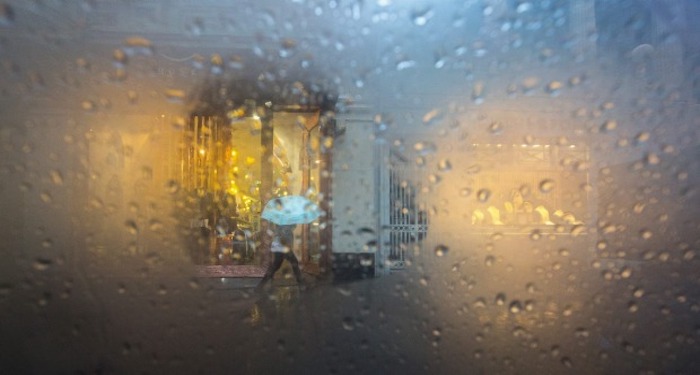
Below is a list of some of the symptoms of condensation:
- An unpleasant mouldy smell
- The appearance of dark mould, particularly around windows or on glass
- Water droplets appearing on windows and walls
Rising Damp
Rising damp is caused by water on the ground that rises up through a wall or the flooring. Walls naturally allow a small amount of water in; however, this won't usually cause any damp problems. This is because most homes are fitted with a damp-proof-course or damp-proof membrane. Rising damp tends to be most common in older homes that may not have this benefit.
Rising damp can also be a problem when there is a lack of drainage or when the level of the ground on the outside of your property is higher up than your damp-proof course. This will allow water to get above it and can lead to dampness entering the property.
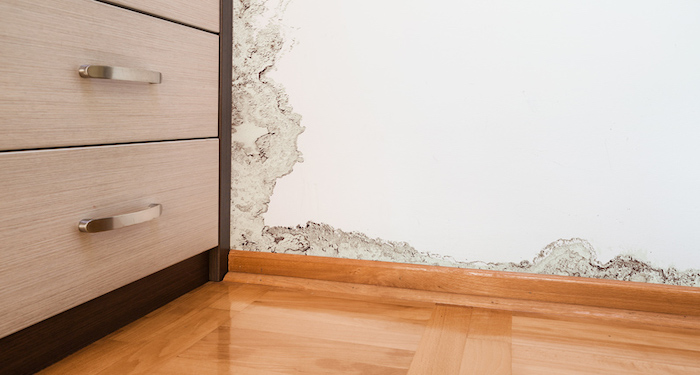
Below is a list of the symptoms of rising damp:
- Damage to skirting boards
- Paint and wallpaper begins to peel, often with wet patches
- A white, powdery substance appears on the wall
- Floor coverings may start to lift
- Marks that rise up the wall
- Damage to plastering
Penetrating Damp
This type of damp happens when water leaks through the walls. It can expand across the walls and onto the ceiling. This type of damp is usually caused by structural problems within the building.
When your home has cracks in the ceilings or walls or if there are any problems with the guttering or roof, this can cause penetrating damp. When your home has structural issues, water can enter through the cracks, or leaks can happen when it rains. Penetrating damp may also be caused by problems such as leaking pipes within the walls.
Penetrating damp is most common in older homes as new homes are often built with cavities in the wall to provide some protection against this type of damp.
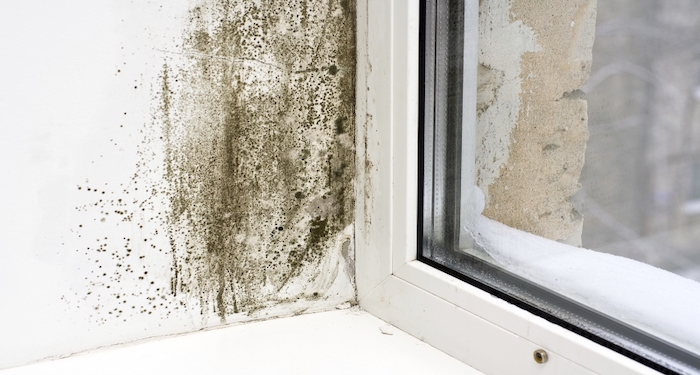
Below is a list of the symptoms of penetrating damp:
- Damp patches on the ceiling that become darker when it rains
- Damp patches on the walls become darker when it rains
Benefits of a Damp Survey
There are many benefits of getting a damp survey on your home. Below is a list of the main advantages of this type of work:
Identify Damp Problems
If you have a damp survey conducted on your home, you can identify all of the damp issues in and around your home. If you are concerned about your home or the health of those living within your home, then a damp survey can help you identify the level of the damp problem in your home.
Identify the Cause of Damp
A full damp survey can help you to identify the cause of your damp problem. This will help you understand why there is damp in your property and will allow the damp specialist to determine the best course of action for treatment.
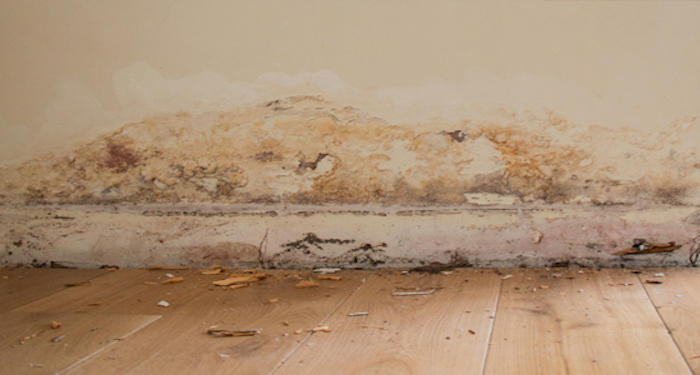
Plan an Appropriate Treatment
When a damp survey is conducted on your home, the survey's outcome will help the tradesperson understand the appropriate treatment needed to remove and prevent the damp from returning once again.
FAQs
Q: What does a damp survey involve?
A: The surveyor will spend the first part of the assessment checking around the permitter of your home and all of the exterior parts of the home for any issues that may allow damp to penetrate through the walls.
They will then move onto the inside part of the property, and they will fully assess all of the interior walls, the flooring, and the ceiling for any damp problems.
Q: Who pays for a damp survey?
A: The homeowner is responsible for paying for a damp survey. In some cases, you may be able to get a free damp survey to identify the damp problem in your home. However, these types of surveys do not tend to be very thorough, and some of the issues may be missed.
For a complete damp survey, it is always best to hire a professional company to complete a full survey of your home to determine the exact cause of the problem so that an appropriate treatment plan can be put in place.
Q: What are the main signs and symptoms of damp in a home?
A: There are several common signs of damp in a home. You may notice a strange, musky smell throughout the house, cracked or crumbling plaster, peeling wallpaper, cold or damp walls, cold or damp flooring, cold or damp ceilings, excess condensation on the windows in your home, dark patches appearing on the walls, the presence of mould and mildew.
If you notice any of these signs or symptoms in your home, then this is a sign that you may have a damp problem, and you should invest in a damp survey to determine the cause so that you can come up with an appropriate treatment plan.
Q: Do I need a damp survey at my home?
A: If you see any signs of damp, no matter how small they may be, you should hire a professional as soon as possible to prevent the problem from becoming much worse than it is now.
If you are a new homeowner or planning on purchasing a new home, then it is recommended that you hire a professional to assess any risks of damp problems beforehand.
Q: Is damp in the home dangerous?
A: Small patches of damp in the home are not much of an issue if they are resolved quickly. However, if you leave these small patches to penetrate and spread to other areas of your home, then your home may suffer from some structural damage.
Damp problems should be resolved as soon as possible to prevent them from spreading. It can cause the plaster on your walls to crack and crumble and may also cause some structural materials to rot. If your damp leads to mould, then your family may be at risk of health problems that are associated with mould.

